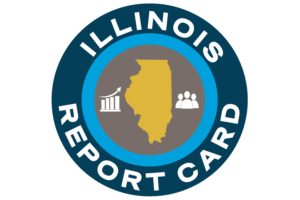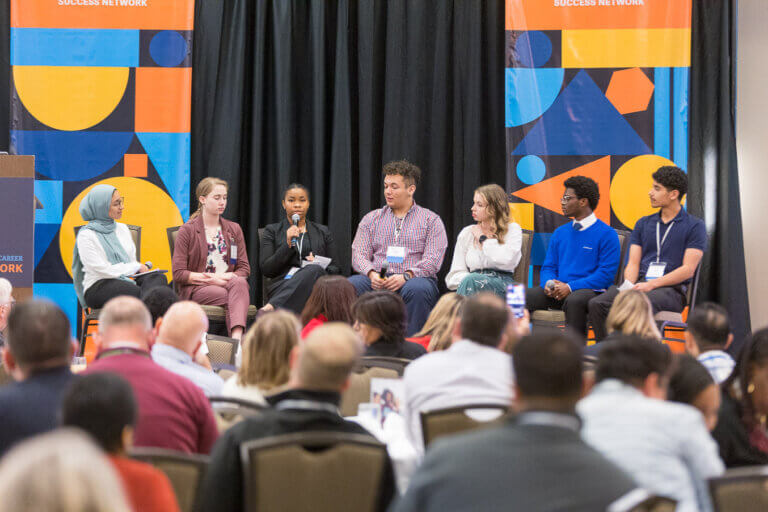
At EdSystems, we often talk about how data can serve as a flashlight, illuminating areas both for celebration and further attention. The Illinois State Board of Education recently released the school year 2018–19 version of the Illinois Report Card, the official source for data and information describing K–12 public schools in communities statewide. With our focus on key metrics of college and career readiness, the release of new Report Card data provides us with an opportunity to both celebrate progress and identify areas needing attention. Illinois’ dual credit enrollment levels continue to rise and our community college remediation rates continue to decline, reflecting the strengthening of secondary and postsecondary partnerships around the state. However, our high school graduation rates and postsecondary enrollment levels are stagnating, which should lead to a more intensive state focus on how we improve these outcomes through our policies, resources, and systems for local support.
Dual Credit Enrollment Rises Across Grades Year Over Year
The number of high school students across 10th, 11th, and 12th grades enrolling in dual credit coursework rose year over year for school year 2018–19. A total of 59,283 students across those grades took at least one dual credit course, which is approximately 35% of the total number of students in those grades taking early college coursework of some kind (N = 169,217). This total compares to 57,175 students (approximately 34% of N = 168,043) in school year 2017–18 and 54,160 students (approximately 33.7% of N = 160,657) in school year 2016–17.
While we should celebrate this steady progress, more Illinois students can and should benefit from dual credit coursework. Research demonstrates that dual credit students are more likely to earn a high school diploma, enroll in college, hold higher grade point averages, and complete a college degree on time. The state’s recent adoption of the Model Partnership Agreement for dual credit, which EdSystems helped develop, should lead to expanded dual credit implementation in future years and a continued uptick in the overall percentage of students benefitting from dual credit coursework.
Overall Remediation and Remedial Mathematics Enrollments Continue to Decline
The percentage of students taking remedial coursework at an Illinois community college continues to fall. Relative to the Class of 2014, the Class of 2017 had approximately 17% fewer students (n = 3,4891) enrolled in remedial coursework. Approximately 44% (n = 17,405) of graduates from the Class of 2017 that enrolled at a community college (N = 39,354) took at least one remedial course of any subject. This percentage represents a decrease from the same percentages for the Classes of 2016 (46%, n = 19,506), 2015 (47%, n = 19,388), and 2014 (49%, n = 20,894) respectively.
This overall downward trend is even more pronounced in remedial mathematics. Relative to the Class of 2014, the Class of 2017 had approximately 20% fewer students (n ≈ 3,551*) enrolled in remedial math, which is certainly a cause for celebration! Approximately 35% (n ≈ 13,774*) of community college enrollees from the Class of 2017 took a remedial math course. This percentage compares to approximately 37% (n ≈ 15,800*), 38% (n ≈ 15,756*), and 41% (n ≈ 17,325*) from the Classes of 2016, 2015, and 2014, respectively.
While the most recent remediation data from the Class of 2017 reflects some early implementation of transitional math under the Postsecondary and Workforce Readiness Act of 2016, the true impact of transitional math will be felt as it scales statewide through the school year 2021–22 under ISBE’s and ICCB’s implementation plan. In the coming years, we should see even steeper declines in math remediation rates as the result of transitional math, meaning thousands more students enrolling in credit-bearing college math courses.
Unfortunately, the downward trend in remedial math does not extend to remedial English, reflected on the Illinois Report Card as remedial communications rates. Approximately 21% (n ≈ 8,264*) of community college enrollees from the Class of 2017 took a remedial communications course, which is the same percentage from the Classes of 2016 and 2015, and only a 1 percentage point improvement from the Class of 2014. EdSystems is working with state agencies to launch a statewide implementation of transitional English that will parallel the statewide system for transitional math. As this new system for transitional English takes hold, the number of students in remedial communications will fall.
4-Year Graduation Rates and Postsecondary Enrollment Rates Are Stagnating
Even as we celebrate the improvements in dual credit and remediation, the Report Card shines a flashlight on areas where there is much more room to grow. Overall four-year graduation rates held steady for the high school graduating Class of 2019 at 86%, compared to 86% and 87% for the graduating Classes of 2018 and 2017, respectively. This general stagnation extends to race/ethnicity-specific rates.
This lack of progress points to the need for interventions that have demonstrated success with improving graduation rates for our most at-risk students. For example, EdSystems is currently working with communities across Illinois to implement Jobs for America’s Graduates (JAG), which has decades of impact data demonstrating the program’s ability to prevent dropouts among young people who have serious barriers to high school graduation and transitioning to further postsecondary education or employment.
Postsecondary enrollment is also down slightly from the prior year. Approximately 73% of the Class of 2017 enrolled in a 2- or 4-year college in the U.S. within 12 months of graduation. By comparison, approximately 75% of the Class of 2016 enrolled within 12 months. This recent decrease pauses the upward trend from the Class of 2014 (68% enrollment) through the Class of 2016.
Similar to remediation, the Illinois Report Card’s data on postsecondary enrollment is lagging, as it allows for a time span for students to enroll in a postsecondary institution and time to collect the data. Illinois’ future data will reflect increased investments in the Monetary Award Program (MAP), the new state law on FAFSA completion, and students attaining College and Career Pathway Endorsements under the PWR Act (which provides students with early college credit on a pathway extending to aligned postsecondary programs). With a continued focus on implementation of all of these important state efforts, the state’s prior trend of increasing postsecondary enrollment levels should return.
Data Source: Illinois Report Card


